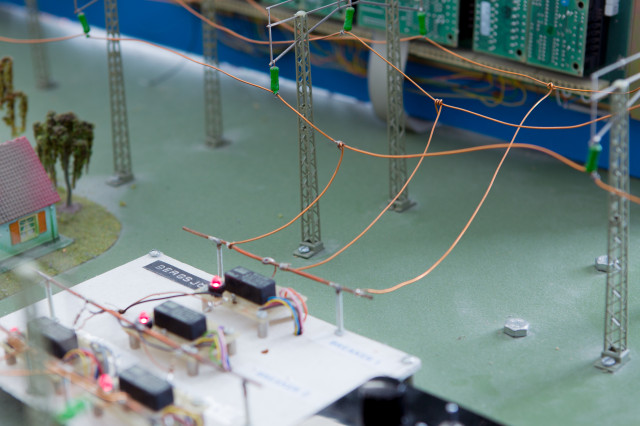This course is an introduction to radio frequency integrated circuits and systems. Firstly, basic concepts of RF design and wireless communication are covered. Then, the course introduces transceiver architectures and their building blocks: low noise amplifier, mixer, oscillator, phase locked loops and power amplifier. The implementation of each building block in modern CMOS processes is studied in detail. Finally, current trends in RF design are described including MIMO and beamforming, direct RF sampling, envelope tracking and digitally assisted RF circuits. The course includes practical design of RF blocks from specification to physical verification using the latest EDA tools.
IL2243 Design of radio frequency integrated circuits 7.5 credits

Information per course offering
Information for Spring 2026 Start 13 Jan 2026 programme students
- Course location
KTH Campus
- Duration
- 13 Jan 2026 - 13 Mar 2026
- Periods
Spring 2026: P3 (7.5 hp)
- Pace of study
50%
- Application code
60276
- Form of study
Normal Daytime
- Language of instruction
English
- Course memo
- Course memo is not published
- Number of places
Places are not limited
- Target group
- Only open to TEBSM
- Planned modular schedule
- [object Object]
- Schedule
- Part of programme
Contact
Course syllabus as PDF
Please note: all information from the Course syllabus is available on this page in an accessible format.
Course syllabus IL2243 (Autumn 2025–)Content and learning outcomes
Course contents
Intended learning outcomes
After passing the course, the student should be able to:
- describe how transceiver architectures are built and explain their advantages and limitations
- describe the modelling of active and passive integrated components at radio frequencies (RF) and the influence of parasitic electrical components
- describe performance measures of RF blocks, such as noise figure, third order intercept (IP3), gain, bandwidth and phase noise
- given a set of specifications, compare different circuit topologies for RF blocks and select a suitable topology for implementation
- analyse basic RF blocks, dimension active and passive components, and design bias point setting circuits
- discuss modern trends in RF design such as MIMO and beamforming, direct RF sampling, envelope tracking and digitally assisted RF circuits
- use Electronic Design Automation (EDA) tools to design and verify RF blocks.
Literature and preparations
Specific prerequisites
Knowledge of Introduction to Integrated Circuits covering 7.5 higher education credits, equivalent to the completed course IL2241.
Knowledge of analog integrated circuits covering 3 higher education credits, corresponding to the completed course IL2242 or the completed module LAB1 in IL2242.
Literature
Examination and completion
Grading scale
Examination
- LAB1 - Laboratory Work, 3.0 credits, grading scale: P, F
- TENS - Written Exam, 4.5 credits, grading scale: A, B, C, D, E, FX, F
Based on recommendation from KTH’s coordinator for disabilities, the examiner will decide how to adapt an examination for students with documented disability.
The examiner may apply another examination format when re-examining individual students.
If the course is discontinued, students may request to be examined during the following two academic years.
Examiner
Ethical approach
- All members of a group are responsible for the group's work.
- In any assessment, every student shall honestly disclose any help received and sources used.
- In an oral assessment, every student shall be able to present and answer questions about the entire assignment and solution.
Further information
Course room in Canvas
Offered by
Main field of study
Education cycle
Supplementary information
In this course, the EECS code of honor applies, see:
http://www.kth.se/en/eecs/utbildning/hederskodex